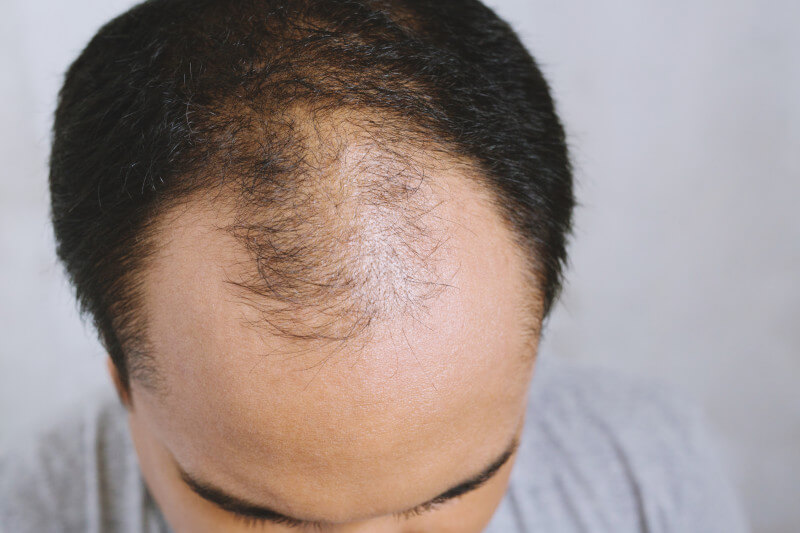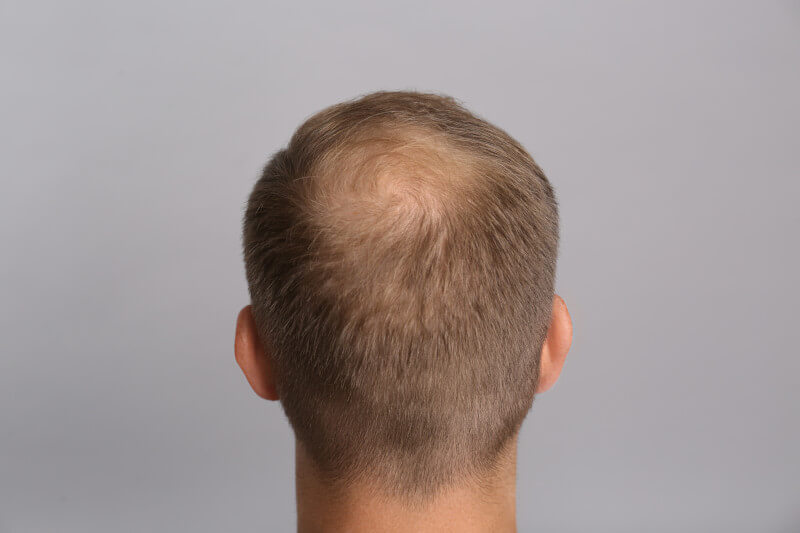Understanding the Difference Between Crown and Hairline Balding

Hair loss is a common concern that affects millions of people worldwide, with male and female pattern baldness being the most prevalent forms. While hair loss can manifest in various patterns and areas of the scalp, two primary areas of concern are the crown (vertex) and the hairline.
“While thinning can occur at both vertex and hairline, it is important to target the cosmetically most important region, which is the frontal hairline, since it frames your face and gives a larger impact on your appearance,” says Dr. Christine Shaver of Bernstein Medical Center for Hair Restoration.
Crown Balding vs. Hairline Balding: Understanding the Difference

Crown Balding
Crown balding, also known as vertex baldness, refers to hair loss at the top or back of the scalp. It typically presents as a gradual thinning of hair in a circular or oval-shaped pattern, eventually leading to partial or complete baldness in the crown area. Crown balding is a common manifestation of male pattern baldness (androgenetic alopecia) and can also occur in women.
Hairline Balding
Hairline balding, on the other hand, involves hair loss along the frontal hairline—the area where the hair meets the forehead. It often presents as a receding hairline, with hair gradually thinning or receding backward over time. Hairline balding is a hallmark characteristic of male pattern baldness, although it can also occur in women and may be associated with hormonal changes, aging, or other underlying factors.
Causes of Crown and Hairline Balding
While male and female pattern baldness share similar underlying causes, the manifestation and progression of crown and hairline balding may vary. Common factors contributing to both types of balding include:
Genetics
Hereditary factors play a significant role in male and female pattern baldness, with a family history of hair loss increasing the likelihood of developing crown or hairline balding.
Hormonal Changes
Fluctuations in hormone levels, particularly dihydrotestosterone (DHT), can contribute to hair follicle miniaturization and eventual hair loss in susceptible individuals.
Aging
As we age, the hair follicles undergo changes in size, texture, and growth cycle, leading to gradual hair thinning and balding over time.
Stress and Lifestyle Factors
Stress, poor nutrition, smoking, and certain drugs and medications can exacerbate hair loss and accelerate the progression of balding in both men and women.
Treatment Options for Crown and Hairline Balding
Fortunately, several effective treatment options are available to address crown and hairline balding and promote healthy hair growth. These options may include:
1. Topical Medications
Over-the-counter and prescription-strength topical medications such as minoxidil (Rogaine) can help stimulate hair growth and slow down hair loss when applied directly to the scalp. Minoxidil is FDA-approved for the treatment of male and female pattern baldness and is available in various formulations, including foam and liquid solutions.
2. Oral Medications
Finasteride (Propecia) is an oral medication approved by the FDA for the treatment of male pattern baldness. It works by inhibiting the enzyme 5-alpha reductase type-2, which converts testosterone into dihydrotestosterone (DHT), a hormone that contributes to hair loss. Finasteride can help reduce DHT levels in the scalp and slow down hair loss in men with androgenetic alopecia, but is not approved for use in women. Oral minoxidil is an off-label medication that can be used in both men and women. It does not block DHT, but rather promotes the anagen growth phase of the hair cycle in order to slow the pace of thinning and thicken existing hair. Both oral finasteride and oral minoxidil work well to thicken hair throughout the scalp, but work best to thicken the crown.
3. Scalp Micropigmentation (SMP)
SMP is a non-invasive cosmetic procedure that involves the application of natural pigments to the scalp to create the appearance of a fuller head of hair. While it does not reverse hair loss, SMP can camouflage areas of thinning or balding, create the illusion of denser hair, and enhance the overall appearance of the scalp. It’s a safe, effective, and long-lasting solution for individuals seeking immediate results without surgery.
4. Hair Transplantation
For individuals seeking a permanent solution to hair loss, hair transplantation offers a viable option. During the procedure, hair follicles are harvested from the donor area of the scalp at the back or sides and transplanted into thinning or balding areas. Modern techniques such as follicular unit transplantation (FUT) and follicular unit extraction (FUE) enable surgeons to create natural-looking hairlines and density that blends seamlessly with the existing hair.
Conclusion: Solutions Are Available for Both Crown and Hairline Balding
Crown and hairline balding can have a significant impact on self-esteem and confidence, but effective treatment options are available to address these concerns and promote healthy hair growth. By understanding the key differences between crown and hairline balding and exploring appropriate treatment options, individuals can take proactive steps to reclaim their confidence and vitality.
Why Choose Bernstein Medical – Center for Hair Restoration?
Bernstein Medical is a world-renowned hair restoration clinic, founded by Dr. Robert M. Bernstein, a pioneer in the field of hair transplantation and follicular unit transplantation (FUT). With over 25 years of experience, Dr. Bernstein and his team specialize in providing advanced hair restoration solutions for both men and women, utilizing the latest techniques and technologies to deliver natural-looking results.
The Medical Director is Dr. Christine Shaver. Dr. Shaver is a board-certified dermatologist and Mohs micrographic surgeon. A graduate of M.I.T and Yale, she is a highly trained expert at blending art and science to create desired outcomes for her patients.
At Bernstein Medical Center for Hair Restoration, patients receive comprehensive evaluations and personalized treatment plans throughout their hair restoration and preservation journey. From non-surgical options such as SMP and medical management to surgical procedures like FUT and FUE, the clinic offers a range of cutting-edge treatments tailored to each patient’s unique needs and goals.
The experts at Bernstein Medical Center for Hair Restoration are happy to discuss what solutions are best for you,
To book a consultation online, click HERE
Call us at: 212-826-2400
Visit our website www.bernsteinmedical.com for more information




